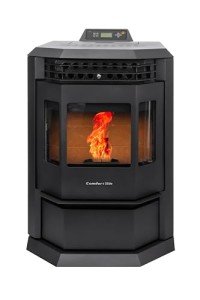The Comprehensive Guide to Fireplaces and Stoves
Fireplaces and stoves have actually been important to human civilization for centuries, acting as a source of warmth, light, and comfort. These home appliances can be found in numerous forms and have actually progressed over the years, dealing with diverse choices and technological improvements. Minimalist Fireplaces provides an informative introduction of fireplaces and stoves, highlighting their types, benefits, maintenance suggestions, and setup considerations.
Types of Fireplaces
The world of fireplaces is rich and varied. Here are the most typical types:
Wood-Burning Fireplaces:
- Traditional and charming.
- Needs seasoned wood and routine upkeep.
- Produces an enjoyable scent and crackling noise.
Gas Fireplaces:
- Offer benefit and ease of usage.
- Readily available in vented and vent-free options.
- More efficient and cleaner than wood-burning alternatives.
Electric Fireplaces:
- Provide ambiance without the need for a chimney.
- Easy to use with push-button control alternatives.
- Can be utilized as a supplemental heat source.
Pellet Stoves:
- Use compressed wood pellets as fuel.
- Extremely efficient and ecologically friendly.
- Typically equipped with thermostats for temperature level control.
Ethanol Fireplaces:
- Utilize bioethanol fuel, making them portable.
- Do not require venting, which permits versatile positioning.
- Produce a sensible flame with very little smoke.
Outdoor Fireplaces:
- Designed for outdoor settings; can be wood or gas-burning.
- Great for amusing and enhancing backyard visual appeals.
- Often built from stone, brick, or metal.
Benefits of Fireplaces and Stoves
Incorporating a fireplace or stove into a home uses various benefits:
- Aesthetic Appeal: Fireplaces work as striking focal points in any room, adding warmth and character to home decor.
- Increased Property Value: Homes with practical fireplaces tend to have higher resale values.
- Energy Efficiency: Modern fireplaces and stoves are developed to be more energy-efficient, which can result in reduced heating costs.
- Backup Heating Source: In case of power outages, wood-burning and gas fireplaces can work as essential heating sources.
- Versatile Heating Solutions: Different types of fireplaces deal with numerous heating requirements and way of lives, from relaxing ambiance to efficient heating.
| Type of Fireplace/Stove | Fuel Source | Efficiency Rating | Upkeep Level |
|---|---|---|---|
| Wood-Burning | Wood | Moderate | High |
| Gas | Natural gas/LP | High | Low |
| Electric | Electrical energy | High | Very Low |
| Pellet | Wood pellets | High | Moderate |
| Ethanol | Bioethanol | Moderate | Low |
| Outdoor | Wood or gas | Moderate | Varies |
Upkeep Tips
Correct upkeep extends the life of fireplaces and stoves, making sure safety and efficiency. Here are some important ideas:
Regular Cleaning:
- Wood-burning fireplaces ought to be cleaned up after a complete season of usage to eliminate soot and creosote.
- Gas fireplaces require periodic examination of the burner and vents.
Regular Inspections:
- Have chimney sweeps perform yearly inspections to identify clogs or structural damage.
- Inspect the seals and gaskets on gas units to prevent leaks.
Fire Safety:
- Install smoke and carbon monoxide gas detectors in homes with fireplaces or stoves.
- Keep a fire extinguisher near the fireplace or stove for emergencies.
Usage Quality Fuel:
- For wood-burning systems, constantly use experienced wood; prevent dealt with or painted wood.
- When using pellets, ensure they are kept properly to prevent moisture absorption.
Handle Airflow:
- Keep vents and ducts clear to promote reliable ventilation and air flow.
- Think about utilizing glass doors or screens to lessen debris and ash in the home.
Installation Considerations
Installing a fireplace or range needs mindful factor to consider of several factors:
Location:
- Choose an area that permits correct clearance and ventilation.
- Consider the design of your home and the benefit of natural heat circulation.
Building Regulations and Permits:
- Check local policies regarding setups and necessary licenses.
- Engage an expert to guarantee compliance with safety requirements.
Fuel Type:
- Evaluate your fuel options based upon availability, cost, and ecological effect.
- If selecting gas, ensure existing gas lines can accommodate the new device.
Ventilation:
- Proper venting is crucial for security and performance, especially for gas and wood-burning systems.
- Seek advice from a professional to determine the best venting solution.
Aesthetic Consideration:
- Select a style that matches your home's interior.
- Consider mantels, surround materials, and colors that match your design.
Frequently asked questions
What is the best kind of fireplace for heating?
Gas fireplaces are usually more efficient for heating, while wood-burning fireplaces provide more ambient heat.
How often should I clean my fireplace?
Wood-burning fireplaces must be cleaned a minimum of when a year, while gas fireplaces require less regular attention depending upon use.
Can I install a fireplace myself?
While some house owners may attempt DIY setup, it is suggested to employ an expert to ensure safety and compliance with building regulations.
Are electric fireplaces efficient?
Yes, electric fireplaces are extremely efficient and can function as effective extra heating sources, specifically in smaller areas.
What is the life-span of a fireplace?
The life expectancy of a fireplace differs depending upon the material, type, and maintenance; however, a well-maintained wood-burning fireplace can last over 30 years.
Fireplaces and stoves remain classic functions in homes, using warmth and atmosphere. Understanding the different types, benefits, and maintenance requirements can assist house owners make notified choices about installation and care. With mindful planning and routine upkeep, these devices can improve both the convenience and value of a home for many years to come.

